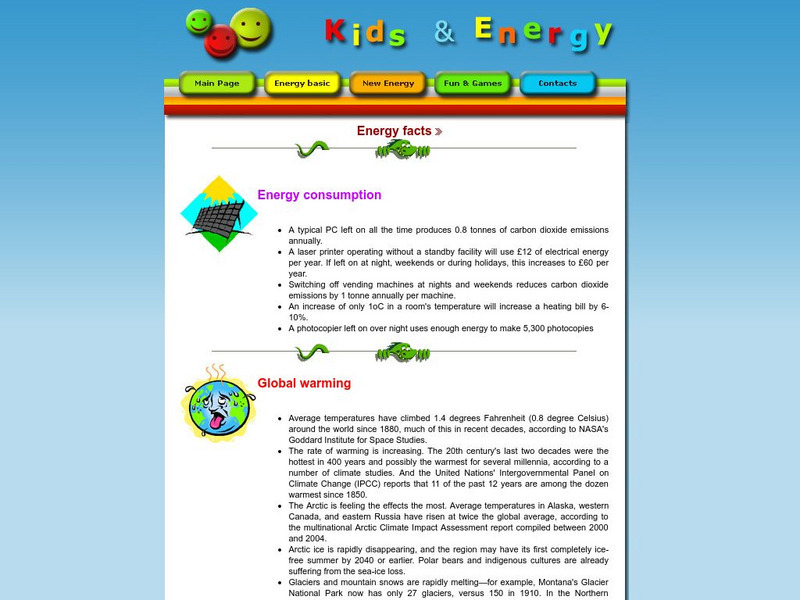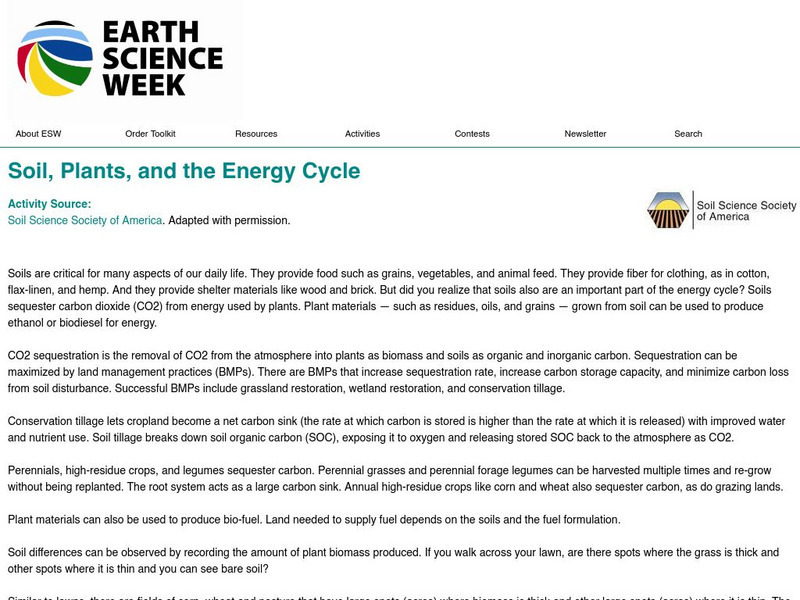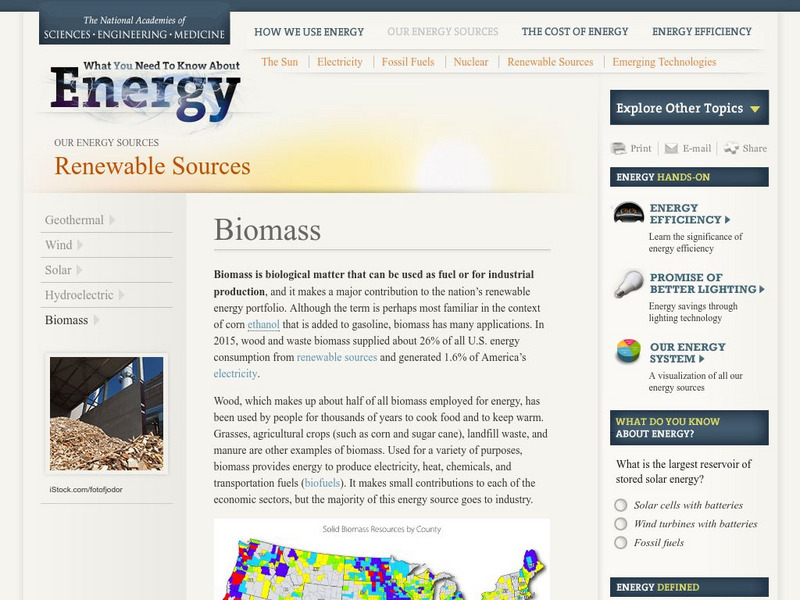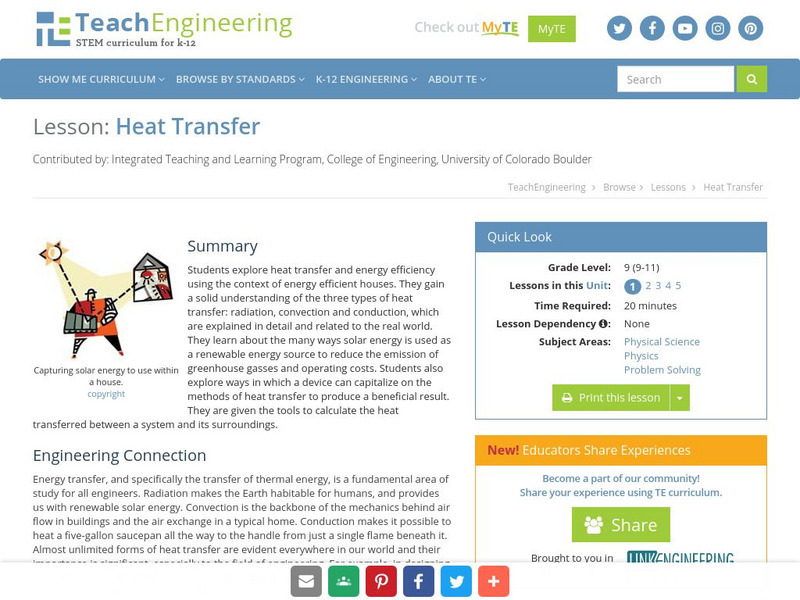Energy4Me
Energy4me: Energy Technology
Learn about the many sources of energy used around the world.
Climate Literacy
Clean: Us Energy Production and Consumption
In this activity learners will compare and contrast regional energy production of 5 different US regions, including California, Illinois, Pennsylvania, Texas, and Washington. Students will also analyze production and consumption data of...
Alabama Learning Exchange
Alex: Energy and Work Amusement Park Style
This is a lesson presenting energy and work. It covers: types of energy, forms of energy, work, law of conservation of energy, and renewable and nonrenewable energy sources. In the activities section, one will find links to Internet...
US Department of Energy
U.s. Department of Energy: Solar Energy Technologies Program: Solar Multimedia
Browse and download from this multimedia collection which contains photographs, videos, B-roll, graphics, and animations related to solar technologies, research, and projects.
National Geographic
National Geographic: Energy Solutions: Tapping Into Topography of Lake Turkana
In this lesson, students read and analyze articles about the alkaline water in Lake Turkana in Kenya, and about a wind energy project near Lake Turkana. They then examine the many factors that must be considered when undertaking this...
TeachEngineering
Teach Engineering: Windmill of Your Mind: Distributed Energy Goes to School
Students research the feasibility of installing a wind-turbine distributed energy (DE) system for their school. They write a proposal (actually, the executive summary of a proposal) to the school principal based on their findings and...
State Energy Conservation Office-Texas
Seco: Biomass: Nature's Most Flexible Energy Resource [Pdf]
Sources of biomass fuel are described, ways it is used, and the economic opportunities available to Texas farmers and industries that produce biomass fuels.
US Energy Information Administration
U.s. Eia Energy Kids: Timelines: Geothermal
Timeline of key milestones in the use of geothermal as a source of energy, starting with the first geothermal power plant built in Italy, in 1904.
Energy for Sustainable Development
Esd Bulgaria: Kids & Energy: Energy Facts
A collection of facts about energy use broken down into various topic areas, e.g., health impact of fossil fuels, transportation, energy consumption, alternative energies, etc.
Other
Ucs: How Hydrokinetic Energy Works
Description of how hydrokinetic power works including resource, conversion, and environmental issues.
American Geosciences Institute
American Geosciences Institute: Earth Science Week: Soil, Plants, and the Energy Cycle
Students explore what kind and how much bio-mass can be produced in an area around your city or town. They figure how many gallons of fuel can be expected from one acre of crop land, and how much carbon can be sequestered in the local area.
Practical Action
Practical Action: Wind Power Challenge
In this unit, students explore how life for people in the rural mountainous regions of Peru is different as they live without access to electricity. They learn how small-scale wind turbines have changed people's lives, as with a supply...
National Academies of Sciences, Engineering, and Medicine
The National Academies: Renewable Sources: Biomass
The pros and cons of harnessing energy from biomass are outlined. Biomass refers to biological materials that are used to produce energy. Wood and manure are examples of biomass.
NASA
Nasa: Climate Kids: Huge Machine Harnesses the Tides
Learn how an alternative energy source called tidal energy works, and find out where it is being harnessed.
Other
Wisconsin K 12 Energy Education Program (Keep)
The mission of KEEP is to improve energy education in Wisconsin's schools. It provides teachers access to resources, activities and web support for many hands-on lessons for all grade levels.
E-learning for Kids
E Learning for Kids: Science: Cruise Ship: What Sort of Energy Is Provided by Water?
Shana is learning about water. Help her discover all the different ways water can provide us with energy.
E-learning for Kids
E Learning for Kids: Science: Cyprus Dancing School: What Sort of Energy Is Provided by the Wind?
Chara is finding out a lot about the wind and how it can provide energy to us. Join her in Cyprus to learn along with her.
Energy for Sustainable Development
Kids and Energy: Hydro Energy
Hydropower is a clean, renewable and reliable energy source which converts kinetic energy from falling water into electricity, without consuming more water than is produced by nature. Quite simply the oldest method by which renewable...
Science4Fun
Science4 Fun: Solar Energy
What is solar energy? Learn about solar heating, solar electricity generation, and the advantages and disadvantages of solar power.
Science4Fun
Science4 Fun: Tidal Energy
What is tidal energy? Learn about using tides to generate power, methods of generating electricity, and the advantages and disadvantages of tidal energy.
State Energy Conservation Office-Texas
State Energy Conservation Office: Solar and Electric Cars [Pdf]
Learn the differences between cars powered by different fuels. Looks at solar, electric, hybrid and gasoline-powered cars.
Climate Literacy
Clean: Zero Energy Housing
Students investigate passive solar building design with a focus solely on heating. Then they design and build their own model houses, and test them for thermal gains and losses during a simulated day and night.
Council for Economic Education
Econ Ed Link: Fewer Watts and Fatter Wallets
Students learn about incentives for alternative energy programs and the role played by non-price determinants in energy choices.
TeachEngineering
Teach Engineering: Heat Transfer
Students explore heat transfer and energy efficiency using the context of energy efficient houses. They gain a solid understanding of the three types of heat transfer: radiation, convection and conduction, which are explained in detail...





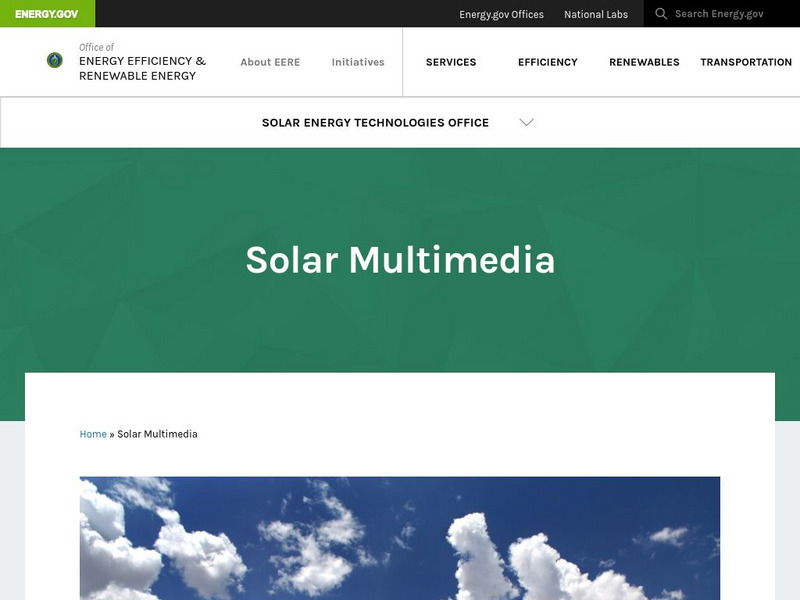
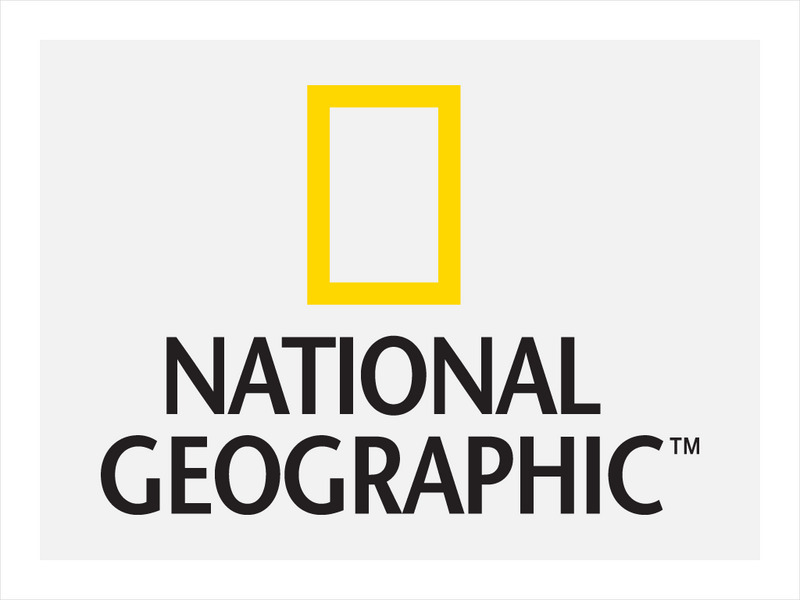
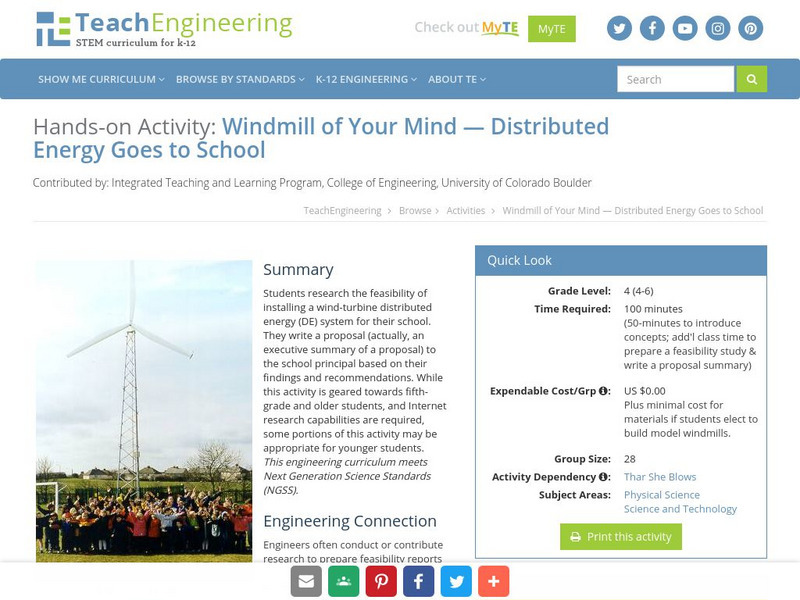
![Seco: Biomass: Nature's Most Flexible Energy Resource [Pdf] Handout Seco: Biomass: Nature's Most Flexible Energy Resource [Pdf] Handout](https://d15y2dacu3jp90.cloudfront.net/images/attachment_defaults/resource/large/FPO-knovation.png)

